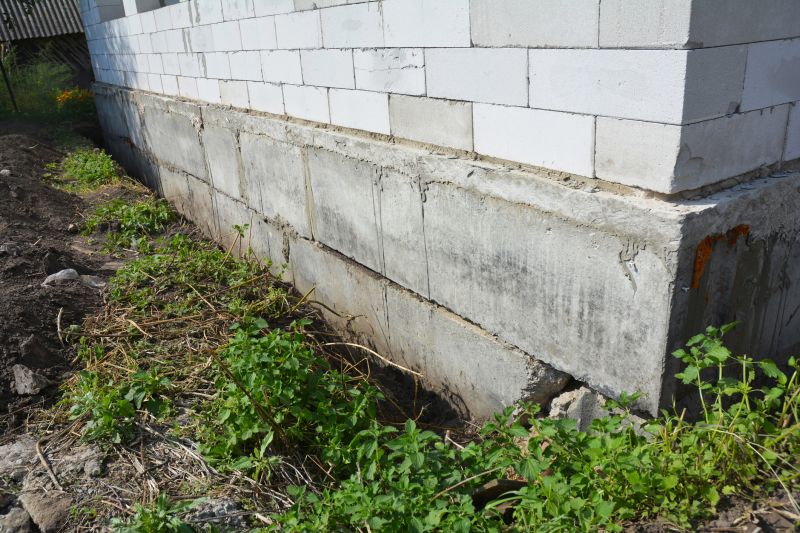Expert Picks Of Concrete Repair Products For Seamless Restoration
Choose from trusted options designed to handle various repair needs, ensuring a smooth and durable finish every time.
 Concrete repair products are essential tools for maintaining the integrity and appearance of concrete surfaces. Whether addressing small cracks, surface spalling, or deep structural issues, selecting the right repair materials can extend the lifespan of concrete structures and improve safety. These products come in various formulations, including patching compounds, sealants, and bonding agents, each designed for specific types of repairs and conditions. Proper application and compatibility with existing concrete are crucial to ensure durable and effective repairs.
Concrete repair products are essential tools for maintaining the integrity and appearance of concrete surfaces. Whether addressing small cracks, surface spalling, or deep structural issues, selecting the right repair materials can extend the lifespan of concrete structures and improve safety. These products come in various formulations, including patching compounds, sealants, and bonding agents, each designed for specific types of repairs and conditions. Proper application and compatibility with existing concrete are crucial to ensure durable and effective repairs.
Top Overall Option
Versatile Concrete Repair Compound
This multi-purpose repair compound is designed to address a wide range of concrete issues, including cracks, holes, and surface damage. It offers excellent adhesion, easy mixing, and smooth application, making it suitable for both professional and DIY projects. Its durable formulation resists cracking and shrinking, helping to maintain the integrity of repaired surfaces over time.
Types of Products For Concrete Repairs
Concrete Patch Mixes
Pre-mixed or dry mix products formulated for filling cracks and surface imperfections.
Epoxy Injection Kits
High-strength epoxy systems used for deep crack filling and structural reinforcement.
Polyurethane Sealants
Flexible sealants ideal for sealing expansion joints and surface cracks.
Hydraulic Cement
Quick-setting cement used for emergency repairs and stopping active leaks.
Concrete Resurfacing Products
Overlay materials designed to restore the surface appearance and texture of worn concrete.
Bonding Agents
Primers that improve adhesion between old and new concrete layers.
Crack Repair Tubes
Ready-to-use tubes for quick crack filling in small areas.
Surface Sealers
Protective coatings that prevent water infiltration and surface damage.
Self-Leveling Compounds
Materials used to create smooth, level surfaces for flooring or overlays.
Fiber-Reinforced Repair Mortars
Enhanced mortars that add structural strength to repairs.
Crack Filler Sticks
Hand-held sticks for quick filling of narrow cracks.
Polymer Modified Repair Materials
Products that combine polymers with cement for improved flexibility and adhesion.
Popular Choices
Widely used for sealing small cracks and preventing water ingress.
Popular for emergency repairs due to its rapid setting time.
Commonly selected for structural crack repairs requiring high bonding strength.
Flexible options for sealing expansion joints and surface cracks.
Chosen for restoring worn surfaces with a smooth finish.
Frequently used to enhance adhesion of new concrete overlays.
Convenient for quick, small-scale crack repairs.
Popular for protecting concrete from water damage and deterioration.
Commonly used in flooring projects to create flat, smooth surfaces.
Favored for their added strength in structural repairs.
For minor surface imperfections such as cracks or surface scaling, quick-setting patch compounds and sealants provide a convenient solution. These products typically cure rapidly, allowing for faster completion of repair projects. For larger or more complex issues, epoxy-based repair systems offer high bonding strength and structural reinforcement capabilities. They can fill deep cracks, restore load-bearing capacity, and improve overall durability.
Surface preparation is a critical step before applying any repair product. Cleaning the area thoroughly, removing loose debris, and sometimes roughening the surface can enhance adhesion. Many repair products are formulated to work with various concrete conditions, but reading manufacturer instructions remains essential. Proper curing time and environmental conditions also influence the longevity and effectiveness of the repair. Investing in high-quality products suited for specific repair needs can make a significant difference in the outcome of concrete maintenance projects.
Key Buying Considerations
- Determine the extent and type of damage to select the appropriate repair product.
- Consider the compatibility of the repair material with existing concrete to ensure proper adhesion.
- Evaluate the setting and curing times to match project timelines.
- Assess environmental conditions such as temperature and humidity that may affect application and curing.
- Choose products with suitable flexibility if the concrete is subject to movement or expansion.
- Look for formulations that resist cracking, shrinking, or other common issues over time.
- Check the ease of application, especially if undertaking DIY repairs, including mixing and tool requirements.
- Review manufacturer instructions for surface preparation and curing to maximize durability.
- Select repair materials that match the surface texture and finish desired after repair.
- Consider the long-term maintenance requirements and compatibility with other repair products.
- Ensure the product is suitable for the specific repair location, whether indoor, outdoor, or load-bearing.
- Evaluate the safety and handling instructions, especially for epoxy or chemical-based products.
- Verify the product's shelf life and storage conditions to avoid waste or compromised effectiveness.
- Budget considerations: balance cost with quality and durability for best results.
- Read customer reviews and expert recommendations to gauge real-world performance.
This page contains affiliate links. Purchasing through these links may earn a commission at no additional cost to you.
